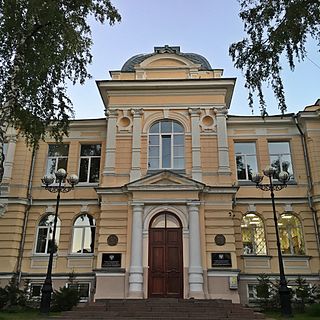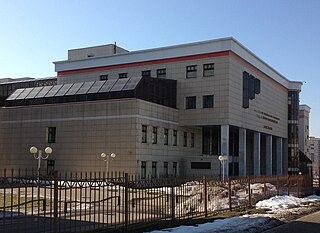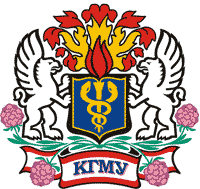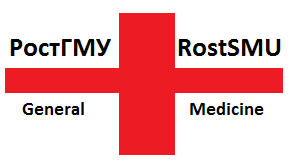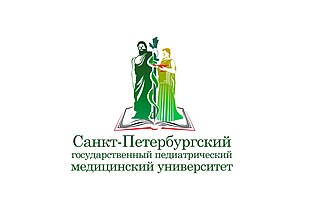This article needs additional citations for verification .(February 2019) (Learn how and when to remove this template message) |
This article includes a list of references, related reading or external links, but its sources remain unclear because it lacks inline citations .(August 2012) (Learn how and when to remove this template message) |
Государственное бюджетное образовательное учреждение высшего профессионального образования «Омский государственный медицинский университет» Министерства здравоохранения Российской Федерации | |
Former names | West Siberian State Medical Institute Mikhail Kalinin Omsk State Medical Institute [1] Omsk State Medical Academy |
|---|---|
| Type | Public |
| Established | 1920 |
| President | Alexander I. Novikov |
| Rector | Maria A. Livzan |
| Students | 5500 |
| Address | Lenin Street, 12 , , |
| Language | Russian |
| Website | http://www.omsk-osma.ru |
The Omsk State Medical University (OSMU) is a school of medicine in Omsk, Russia. It was founded as the Medical Faculty of the Siberian Institute of Veterinary Medicine and Zoology in 1920, and reorganized as the West Siberian State Medical Institute in 1921. It was renamed the Omsk State Medical Institute in 1925, and the Omsk State Medical Academy in 1994. In 2015, the Academy was assigned with the status of University [2] .
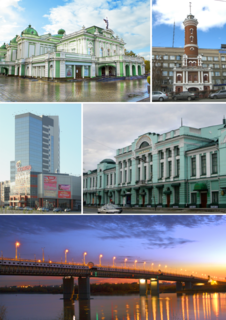
Omsk is a city and the administrative center of Omsk Oblast, Russia, located in southwestern Siberia 2,236 kilometers (1,389 mi) from Moscow. With a population of 1,154,116, it is Russia's second-largest city east of the Ural Mountains after Novosibirsk, and seventh by size nationally. Omsk acts as an essential transport node, serving as a train station for Trans-Siberian Railway and as a staging post for the Irtysh River.

Russia, officially the Russian Federation, is a transcontinental country in Eastern Europe and North Asia. At 17,125,200 square kilometres (6,612,100 sq mi), Russia is by a considerable margin the largest country in the world by area, covering more than one-eighth of the Earth's inhabited land area, and the ninth most populous, with about 146.79 million people as of 2019, including Crimea. About 77% of the population live in the western, European part of the country. Russia's capital, Moscow, is one of the largest cities in the world and the second largest city in Europe; other major cities include Saint Petersburg, Novosibirsk, Yekaterinburg and Nizhny Novgorod. Extending across the entirety of Northern Asia and much of Eastern Europe, Russia spans eleven time zones and incorporates a wide range of environments and landforms. From northwest to southeast, Russia shares land borders with Norway, Finland, Estonia, Latvia, Lithuania and Poland, Belarus, Ukraine, Georgia, Azerbaijan, Kazakhstan, China, Mongolia and North Korea. It shares maritime borders with Japan by the Sea of Okhotsk and the U.S. state of Alaska across the Bering Strait. However, Russia recognises two more countries that border it, Abkhazia and South Ossetia, both of which are internationally recognized as parts of Georgia.

Siberia is an extensive geographical region spanning much of Eurasia and North Asia. Siberia has historically been a part of modern Russia since the 17th century.
There are more than 40,000 OSMU graduates in Russia and abroad, and there are more than 4,500 students studying in five faculties: medicine, pediatrics, preventive medicine, stomatology and pharmaceutics. The medical faculty (the school's oldest) was founded in 1920. The maternity and child-protection faculty was established in 1931, and reorganized into the pediatric faculty in 1934. The sanitary and hygienic faculty was founded in 1938, and renamed the preventive-medicine faculty in 1989. The dentistry faculty was established in 1957, and the pharmaceutical faculty was founded in 2002. Since 1997 OSMU has been headed by Alexander I. Novikov, MD, PhD, Professor and Academician of the International Academy of Advanced Sciences.
A faculty is a division within a university or college comprising one subject area, or a number of related subject areas. In American usage such divisions are generally referred to as colleges or schools, but may also mix terminology.

Pediatrics is the branch of medicine that involves the medical care of infants, children, and adolescents. The American Academy of Pediatrics recommends people be under pediatric care up to the age of 21. A medical doctor who specializes in this area is known as a pediatrician, or paediatrician. The word pediatrics and its cognates mean "healer of children"; they derive from two Greek words: παῖς and ἰατρός. Pediatricians work both in hospitals, particularly those working in its subspecialties such as neonatology, and as outpatient primary care physicians.
Pharmaceutics is the discipline of pharmacy that deals with the process of turning a new chemical entity (NCE) or old drugs into a medication to be used safely and effectively by patients. It is also called the science of dosage form design. There are many chemicals with pharmacological properties, but need special measures to help them achieve therapeutically relevant amounts at their sites of action. Pharmaceutics helps relate the formulation of drugs to their delivery and disposition in the body. Pharmaceutics deals with the formulation of a pure drug substance into a dosage form. Branches of pharmaceutics include:
Scientists associated with OSMU include Raymond Achrem-Achremovich, Valentine Bisyarina, Peter Gorizontov, Vladimir Eliseev, Vladimir Pulkis, Leonid Maslov, Constantine Romodanovsky and Olga Sokolova-Ponomareva. OSMU staff include members of the Honored Scientific Workers of the Russian Federation, Honored Staff Workers of the Higher School of the Russian Federation, Honored Physicians of the Russian Federation, and honorary professors.
OSMU has relationships with educational institutions in Western Europe, the United States, Japan and other countries. The school consists of 59 departments. Of its staff, 73 percent have an academic degree and over 100 MD-PhD full professors and 300 MD-PhD associate professors are employed by the academy.
The campus includes six buildings, with three dormitories providing accommodation for out-of-town students. The educational process uses up-to-date information technology. The academy has an electronic educational network integrated with the internet, featuring 350 computer terminals and 12 computer classes.
The Student Scientific Society, with about 800 members, provides the basis for physician training. The academy library is the largest of Russia's medical schools, with over 600,000 volumes including many unique publications. It has a fully equipped computer room with internet access.



